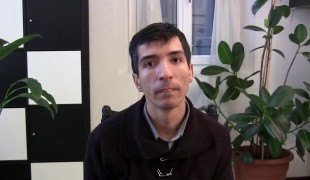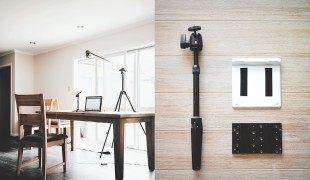- 9191
- 619
- 13
- 14
- 0
- Help Ukraine
About the solution
Wii Go circulates easily through the corridors and shelves. The groceries are put inside a bag or a box carried by the robot, and it is always following the owner. It identifies the obstacles in the way, allowing the user to shop around with having to drive the cart. In order to use it, the owner has just to place himself in front of the robot, and press start. In a few seconds, the Wii Go cameras make a 3D recognition of the user as the person to follow around. The robot will always be following the owner, keeping a safety distance and avoiding obstacles along the way.
“The utilization of this modern shopping cart should be free. For most people, technology makes things easier; For disabled people, it makes things possible”, the engineer affirmed.
Luis de Matos is also an entrepreneur, having founded Follow Inspiration, a tech company, in 2012, right after finishing college.
“It is imperative to get the attention from the retailers about the features of this kind of technologies, but there also change to be made in the Portuguese stores. There are stores in Portugal in which a wheelchair user can’t navigate because it is too stuffed. These behaviors have to change”, Luís explained.
Follow Inspiration intents to produce Wii Go in Portugal, having the partners already selected.
“We believe our technology can accelerate business and, above all, improve people’s lives”, the inventor stated.
Adapted from: http://followinspiration.pt/noticia_expresso.pdf
More info: http://www.followinspiration.pt
https://youtu.be/kXzKopCDaxo
这些解决方案不应包括使用药物,化学品或生物制品(包括食品);创伤性设备;冒犯性的,商业或内在危险的内容。该解决方案未经医学验证。请谨慎进行!如果您有任何疑问,请咨询健康专家。
DISCLAIMER: This story was written by someone who is not the author of the solution, therefore please be advised that, although it was written with the utmost respect for the innovation and the innovator, there can be some incorrect statements. If you find any errors please contact the patient Innovation team via info@patient-innovation.com
-
-
241
-
0
-
2652

Collaborator James Leckey makes equipment to improve the quality of life and social inclusion of children with special needs
MOVING IN A WHEELCHAIR: Moving using a wheelchair.
BODY BALANCE: Maintaining body balance
STANDING UP: Standing up from a seated position
Playing
Neuromuscular Disorders
Assistive Daily Life Device (to help ADL)
Walking Aid (wheelchair/walker/crutches)
Assistive Technology access
5 Senses support devices: (glasses, hearing aids, headphones...)
Restoring mobility
Promoting self-management
Managing Neurological Disorders
Promoting inclusivity and social integration
Maintaining Balance and Mobility
Raise awareness
General and Family Medicine
Neurology
Orthopedics
Pediatrics
Physical Medicine and Rehabilitation
United States
-
-
-
327
-
0
-
4506

Man with cerebral palsy creates assistive devices
MOVING IN A WHEELCHAIR: Moving using a wheelchair.
COMMUNICATION: Communicating, whether by speaking, listening, or other means
Cerebral Palsy
Neuromuscular Disorders
Cervical spinal cord injury/Tetraplegia
Assistive Daily Life Device (to help ADL)
Assistive Technology access
Muscle cramps or spasms
Difficulty coordinating movements
Stiffness or rigidity (difficulty moving)
Paralysis of the legs and lower body
Muscle weakness
Restoring mobility
Managing Neurological Disorders
Promoting inclusivity and social integration
General and Family Medicine
Neurology
Italy
-
-
-
574
-
0
-
9446

Patient invents device to work with nose and lips
BODY BALANCE: Maintaining body balance
Mobility impairments
Arthritis
Rheumatoid Arthritis
Muscle Tone Abnormalities weakness
Assistive Daily Life Device (to help ADL)
Assistive Technology access
Muscle weakness
Limited range of motion
Muscle pain or stiffness
Loss of muscle coordination
Muscle cramps or spasms
Joint deformity
Swelling or inflammation
Muscle twitching
Numbness or tingling in the extremities
Joint pain or swelling
Managing pain
Promoting self-management
Managing Neurological Disorders
General and Family Medicine
Neurology
Orthopedics
Rheumatology
Sweden
-
 zh
zh